| Tên khác | Lưỡi đục lỗ, Máy cắt điểm đục lỗ |
|---|---|
| Nơi Xuất Xứ | Trung Quốc |
| Ứng dụng | Nhựa, Giấy, Bảng, Vải không dệt, Phim, Giấy bạc, Nhãn, Băng, Dệt may, Bao bì, Thảm, Túi, Lõi, Cao su, Cuộn |
| Vật liệu | 65Mn,9CrSi,Cr12MoV,SKD-11,HSSl |
| Số Hiệu Mẫu | CV-PK |
| Dịch vụ OEM | Khả dụng |
| Điều Khoản Thanh Toán | L/C, T/T, Western Union |
| Đóng gói | Hộp Carton, Thùng Gỗ |
| Thời Gian Giao Hàng | 7-20 Ngày |
Chia sẻ lên:
A perforating blade, also known as a perforation blade, perforated blade or hole saw in some contexts, is a specialized cutting tool designed to create a series of small cuts or holes in a material, leaving behind uncut sections. This allows the material to be easily torn or separated along the perforated line. The term “perforating” itself implies the act of making a line of holes or tears in something so that it can be easily broken off. In industrial applications, perforating blades are crucial for creating controlled weaknesses in materials for various purposes, from packaging to paper products.
Perforating blades find extensive use across a wide range of industries due to their ability to create easy-tear lines. Some common applications include:
The choice of material for a perforating blade depends on the material being cut and the demands of the application. Common materials include:
The selection of the appropriate material ensures the perforating blade maintains its sharpness and provides consistent performance over its lifespan. Coatings like black oxide can also be applied to improve wear resistance and aid in identifying wear.
Perforating blades come in various shapes and configurations to achieve different perforation patterns and cutting actions. Some common shapes include:
The working principle of a perforating blade involves applying pressure to the material at specific points or along a line, creating a cut or a series of cuts. The geometry of the blade, particularly the teeth and the cutting edge, determines the length and spacing of the perforations. For rotary blades, the continuous rotation ensures a consistent perforation along the material’s path. The “cut and tie” ratio is a critical parameter, defining the length of the cut and the remaining uncut material, which dictates the ease of tearing and the strength of the perforated material before separation
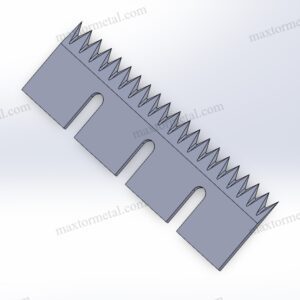
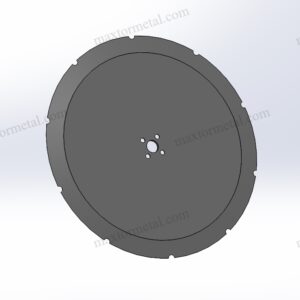
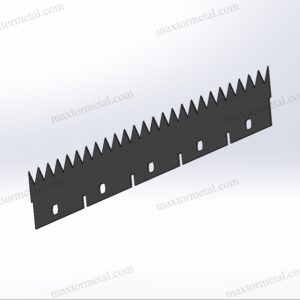
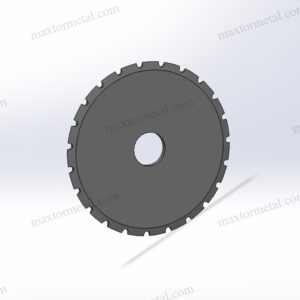

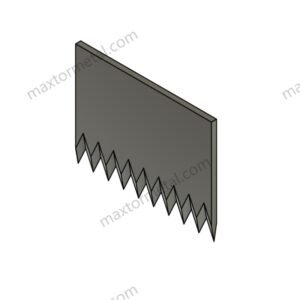


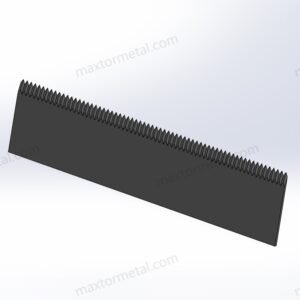
Tận hưởng sự tiện lợi của việc nhập khẩu liền mạch. Từ vận chuyển đến thông quan, chúng tôi xử lý toàn bộ quá trình. Tất cả những gì bạn cần làm là thanh toán VAT và chờ hàng đến công ty.
Chúng tôi đã chứng kiến lưỡi dao của mình xuất sắc trong vô số ứng dụng và sẵn sàng xử lý bất kỳ dự án nào bạn giao phó - mang lại độ chính xác, độ bền và mức giá cạnh tranh không đối thủ.
Cho dù bạn cung cấp bản vẽ, phác thảo hay mẫu, chúng tôi đều có thể vẽ và sản xuất cho bạn. Chúng tôi cũng có khả năng hỗ trợ sửa đổi các thiết kế và thông số kỹ thuật hiện có để cải thiện hầu hết mọi ứng dụng dụng cụ công nghiệp. Vui lòng liên hệ với đội ngũ bán hàng chuyên trách của chúng tôi để thảo luận về các yêu cầu cụ thể của bạn.
Một loạt các thử nghiệm và kiểm tra được thực hiện để kiểm soát chất lượng, bao gồm kiểm tra sản phẩm đầu tiên, kiểm tra nguyên vật liệu đầu vào và vật liệu được chứng nhận, kiểm tra chất lượng trong quá trình sản xuất, và kiểm tra chất lượng cuối cùng.
Dù bạn là nhà nhập khẩu, nhà phân phối, nhà bán buôn hay người dùng cuối, chúng tôi đều chào đón bạn tham gia với MOQ tối thiểu, không rắc rối khi yêu cầu và tự do mua hàng hơn.
Trở thành người giám sát độc quyền của bạn, truyền tải thường xuyên mọi nút quan trọng trong dây chuyền sản xuất, dù ở xa đến đâu, tiến độ của sản phẩm sẽ được nắm bắt một cách tốt nhất có thể.
Nanjing Metal Industrial CO., Limited
Mingjue Industrial Park, Lishui, Nanjing, Jiangsu, China
Cập nhật những tin tức mới nhất của chúng tôi.